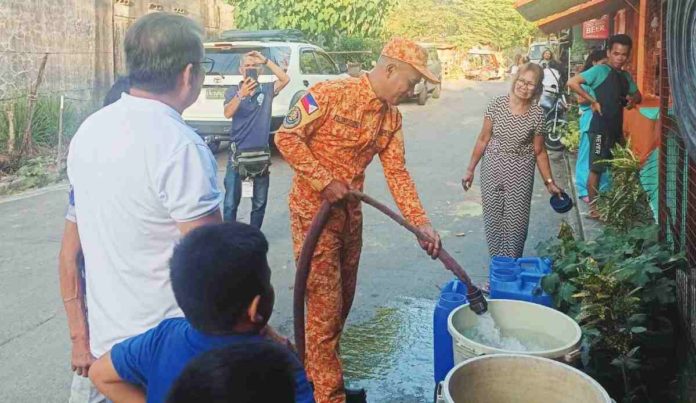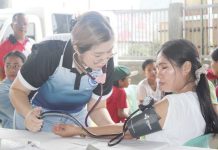
ILOILO – The provincial government is gearing up for possible water rationing in light of the Philippine Atmospheric, Geophysical, and Astronomical Services Administration (PAGASA) forecasting the effects of El Niño phenomenon to persist until May.
Several areas in the province may face household water shortages, raising concerns about local governments’ preparedness to provide water through rationing.
Cornelio Salinas, head of the Provincial Disaster Risk Reduction and Management Office (PDRRMO), said the provincial government is ready to implement water rationing in coordination with the Bureau of Fire Protection (BFP), which is better equipped to conduct such operations due to its access to water tankers.
He issued the assurance during discussions on water scarcity for household use by the Committee on Disaster Preparedness, chaired by the Department of Interior and Local Government (DILG).
“Hopefully malampuwasan naton ang puersa ni El Niño,” said Salinas.
The committee, which is part of the Western Visayas El Niño Task Group organized by the Office of Civil Defense (OCD) Region 6, focuses on the impacts of El Niño, especially on water security.
Salinas said the provincial government plans to support the BFP by providing fuel, equipment, and other necessities for water delivery to affected households.
Additionally, the province will mobilize trucks and other vehicles to assist in water rationing efforts.
Urban areas or poblacions, with high demand for water from households and commercial establishments, are expected to be most impacted. However, Salinas believes that rural and mountainous areas will not face significant problems due to the availability of alternative water sources.
The PDRRMO head is confident that local water districts, including the Dumangas-Barotac Nuevo Water District (DBNWD) and Metro Pacific Iloilo Water (MPIW), are also preparing for the worst-case scenario. These districts have water tankers that can be utilized if necessary.
So far, no areas in the province have requested assistance due to a lack of potable water for household use, possibly because private water distribution utilities can still meet the demand.
Salinas previously noted that some towns distant from water sources like dams and water districts have begun to experience a decrease in water supply.
He anticipates that the first district, comprising towns such as Oton, Tigbauan, Tubungan, Igbaras, Guimbal, Miag-ao, and San Joaquin, will be most affected by water scarcity if hot weather persists.
Meanwhile, central and northern towns are expected to be less affected due to their proximity to water district lines./PN





